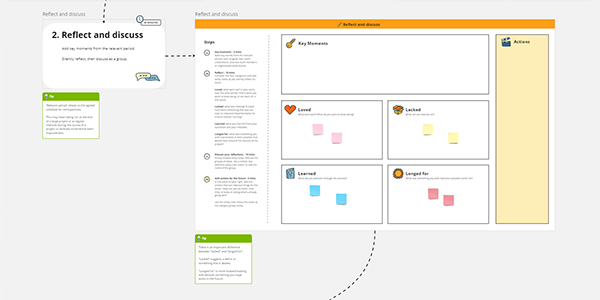Decide on the frequency
During a project, it’s best to perform regular retrospectives to ensure the team is constantly improving and gaining efficiencies. At the start of your project, agree as a team how frequently you would like to run your retros. Every 2 weeks? Every month?
Decide whether you will do the action planning optional section of the retrospective and plan your session length accordingly.
Once the team has agreed on the frequency set a recurring calendar booking.
Invite your participants
Participants in this session should be the team involved in the project you want to run a retrospective for. This may include a Subject Matter Experts, Project Manager (PM), Project Officer, Designers, Business Analyst, Communications Officer, Solution Architect, or Developers. You’ll want to make sure when you send an invite for the session, that you clearly explain the goal, how long the session will take, and why people’s participation will be beneficial.
Here’s a calendar invitation template you can use when inviting participants:
Subject:
Retrospective for [project name]
Meeting description:
Hi [team name if sending a group invitation, or participant name if sending individual invitations]
As we're finalising our [name of project] work, we'd like to get everyone together for a retrospective. In this session we’ll reflect on what we’ve achieved, what things need consideration, and we’ll use what we learned to improve as a team.
The session will take about x minutes and there is no preparation required. We will be reflecting on [time e.g., the last month] of our work on [name of project].
Having [you/each of you] attend will ensure everyone’s voice is heard and we can improve any inefficiencies in the future. We will be using Miro for this workshop and you can read more about the retrospective session in the Digital service design playbook.
I look forward to your contribution to this session. [if you’re planning to record the session make sure to ask for participant consent here].
Kind regards,
[facilitator name]
Setting up the tools
For remote teams, use the Miro template provided.
For in-person teams, find a whiteboard or large piece of paper and set out sticky notes and markers in a meeting room. Create six columns labelled key moments, loved, lacked, longed for, learned and actions.




